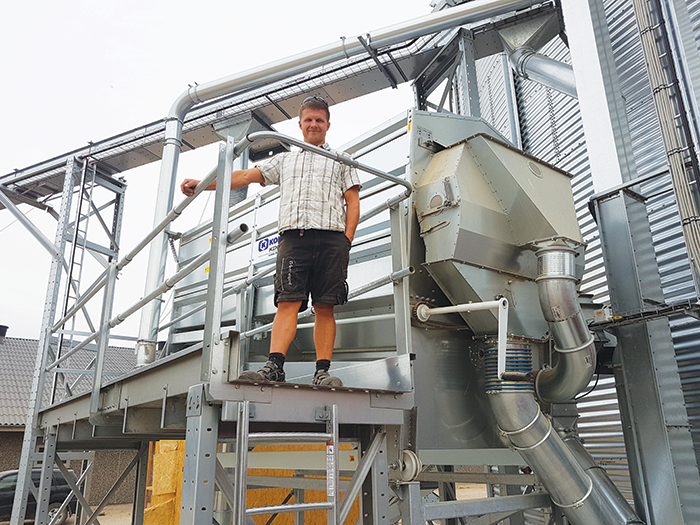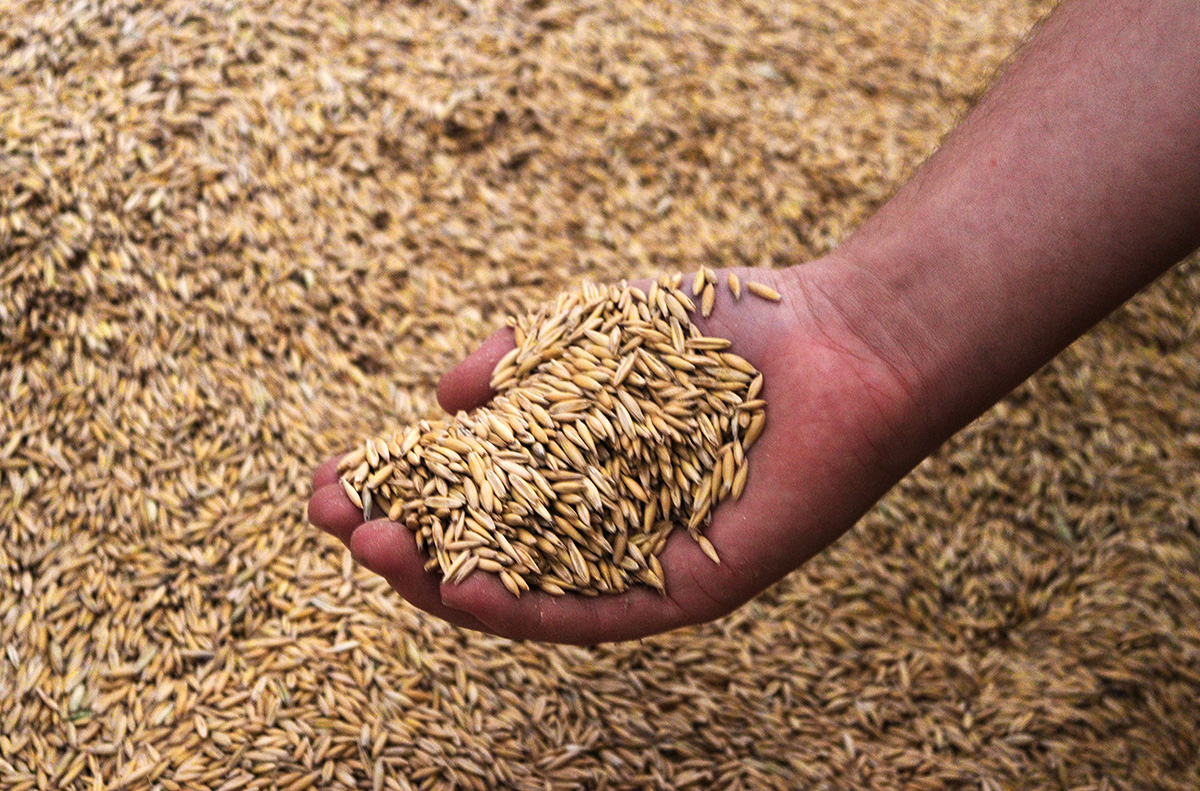
August 18, 2025

Grain might look clean at first glance, but beneath the surface, tiny impurities like sand, dust, mold spores, weed seeds, and damaged kernels can undermine everything from feed quality to machine lifespan. For many farms, grain cleaning has become a practical way to improve both crop quality and overall efficiency.
At Kongskilde, we have spent decades working closely with farmers, agricultural dealers, and grain experts across the world. What we have learned is simple: grain cleaning is not just a technical process; it’s a smart decision with ripple effects across the entire value chain.
Why Grain Cleaning Should Be a Priority
Today’s agricultural landscape is driven by more than yield. Producers must also meet standards for health, sustainability, feed safety, and efficiency. Unfortunately, unclean grain can comprise all of these:
- Health risks: Fungal toxins such as fusarium, which cling to crop residues and dust, pose a serious threat to both human and animal health.
- Livestock impacts: Poor quality feed can reduce fertility, impair digestion, and lead to slower growth and higher veterinary costs.
- Storage challenges: Impurities trap moisture, increasing the risk of mold, spoilage, and spontaneous combustion in storage facilities.
- Higher costs: Dust and fine particles reduce airflow in silos, making drying less efficient and increasing energy consumption.
The upside? Clean grain leads to improved feed quality and safer storage, and ultimately, higher margins and fewer problems for both farmers and the partners who support them.
Lessons from the Field: Insights from Farmers
Across different geographies, crop types, and operational sizes, farmers consistently report meaningful benefits when they prioritize cleaning. Here are some real-world examples from farmers who have optimized their cleaning processes:
- Improving Feed Safety and Pig Health: Grain cleaning helps reduce toxins and dust in feed—especially critical when toxin levels are high. This leads to healthier animals, fewer health issues, and less need for costly binders. See more (English subtitles available)
- Oats and Peas on an Organic Farm: A mixed cropping system led to separation and impurity issues. With the right cleaning setup, the farmer achieved high purity, better storage performance, and more viable seed output. Read more
- High-Moisture Maize Challenges: Moisture content and system clogging were reducing feed quality and storage efficiency. With tailored cleaning configurations, the farmer was able to reduce waste, improve grain quality, and meet trading standards. Read more
- Cost Savings through Toxin Reduction: Clean grain led to less reliance on costly toxin binders and improved pig nutrition, helping the farm recover its equipment investment more quickly. Read more
These examples highlight what grain cleaning can achieve: greater control over quality, reduced risks, and long-term cost savings.
Clean Grain, Better Outcomes – for Every Farm
Whether you are producing seeds, raising livestock, or managing organic operations, grain cleaning is a lever you can pull to achieve:
- Higher Crop Value: Clean, uniform, and toxin-free grain fetches a premium price.
- Improved Feed Quality: Cleaner feed means healthier animals and better conversion rates.
- Lower Costs: Less wear on machinery and reduced energy costs for drying.
- Market Flexibility: Cleaning enables better sorting, storage, and handling for a variety of uses.
- Safe, Efficient Storage: Eliminate hotspots, reduce moisture, and prevent spoilage.
- Less Equipment Wear: Cleaner grain means less stress on mills and feeding systems.
A Knowledge-Based Partnership
At Kongskilde, we do not just deliver cleaning solutions, we collaborate to solve real grain handling challenges. With over 75 years of experience in grain handling and optimization, our team brings insights to help you:
- Supply high-performing systems and components
- Ensure cleaner, more efficient feed systems
- Avoid costly losses and contamination
- Improve grain profitability
If you want to explore how grain cleaning could enhance your operation or those of your customers, our specialists and dealer partners are ready to advise or conduct an on-site grain quality test.
For more information, contact Peter Ersted Frederiksen.

Featured Case Studies
Case Study
Cleaning of Pig Feed – I/S Gammelgaard
I/S Gammelgaard, a family-run farm in Denmark, faced challenges with grain impurities affecting pig feed quality and overall farm efficiency.
Case Study
Cleaning of Mixed Crops – Rolf Hach Agricultural Business
Rolf Hach, an organic farmer in Germany, needed an efficient cleaning solution to separate mixed crops, improve grain storability, and prepare high-quality seed.
Case Study
Cleaning of High-Moisture Maize for Animal Feed – Gaec du Québec
Gaec Quehebec, a grain producer and contractor in the north-west of France, specializes in growing and cleaning grain, including maize, for animal feed.



